#sakon shima
Explore tagged Tumblr posts
Text
Sakon Shima
1. The Elvis shtick they had going for him in SW2 was weird, and I’m happy they mostly tossed that out in subsequent games. He’s a cool “older” guy who’s mostly calm and collected and wants to have some fun, too.
2. Mitsunari. I don’t think anyone is better suited for Sakon than Mitsunari, whether you all like them romantic, platonic, or whatever, I think they’re just soulmates. Though I won’t lie, I was very amused by Sakon flirting with Zhuge Dan in WO3
3. Hmm...idk does Sakon really interact with anyone outside of Mitsunari? Oh wait, Sima Zhao! Yeah him and Zhao had a cool friendship going on in WO3.
4. Hmm...as I mentioned, the Elvis thing was weird and I’m glad they got rid of it, sorry for the fans who liked that persona. I don’t really have anything negative to say about him, he’s not really one of my favorites, but I don’t dislike him either
3 notes
·
View notes
Text
need a sakon route asap, or an event
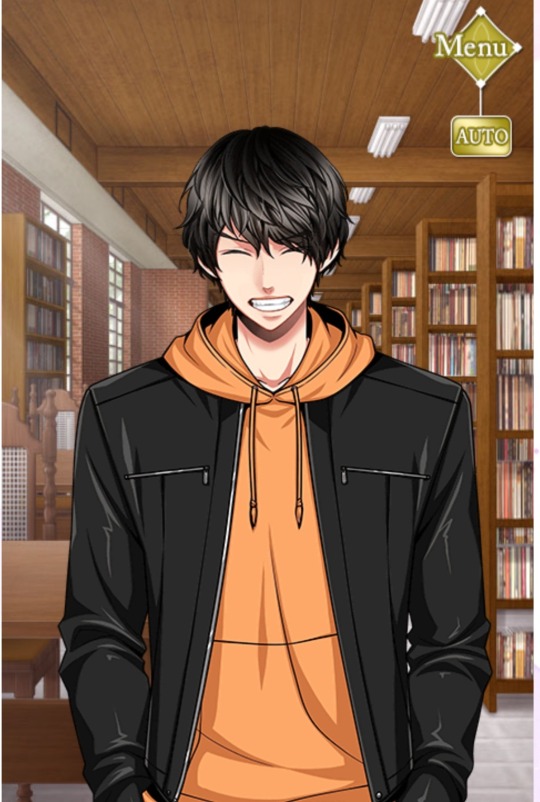
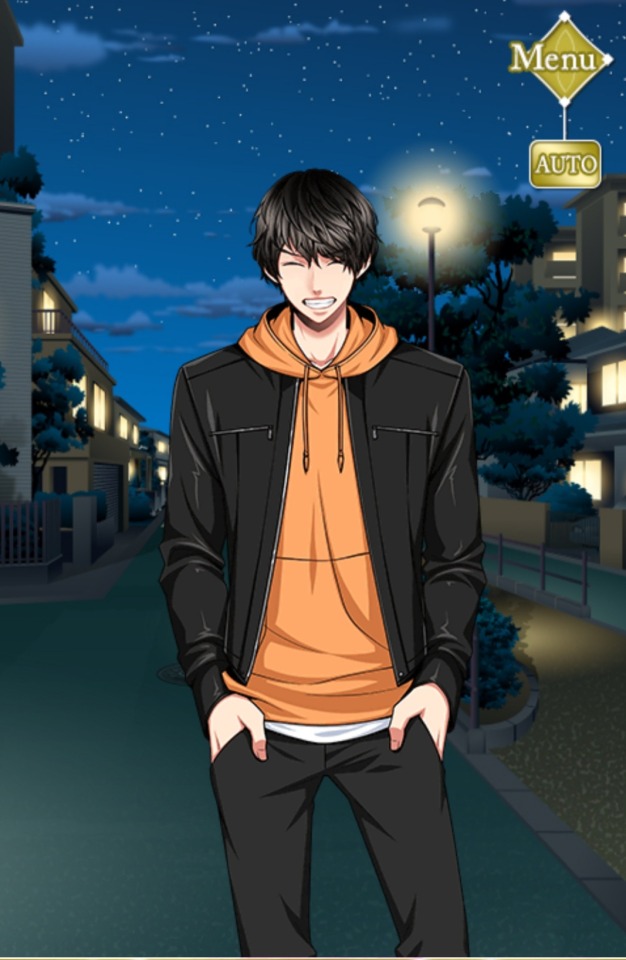
7 notes
·
View notes
Text
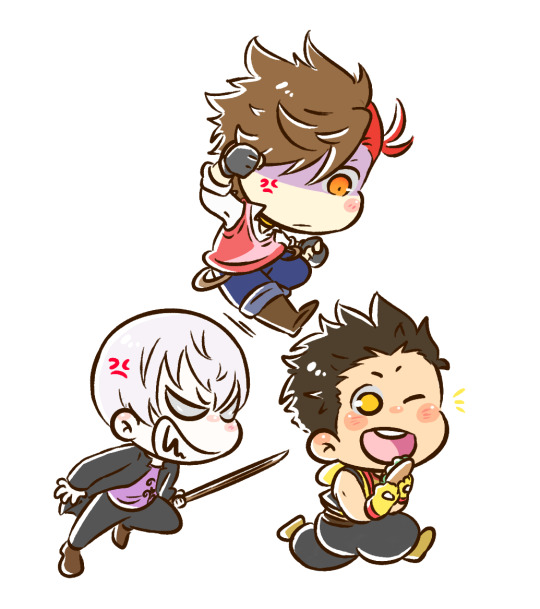
Gakuen Basara ^^
#sengoku basara#gakuen basara#senbasa#BASARA#SenBasa#tokugawa ieyasu#shima sakon#ishida mitsunari#ieyasu#sakon#mitsunari#戦国basara#学園BASARA
24 notes
·
View notes
Text




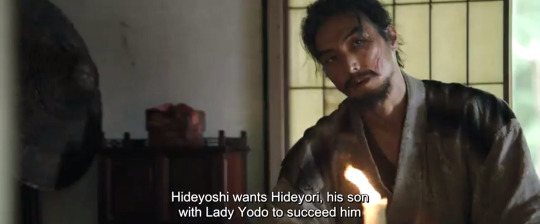
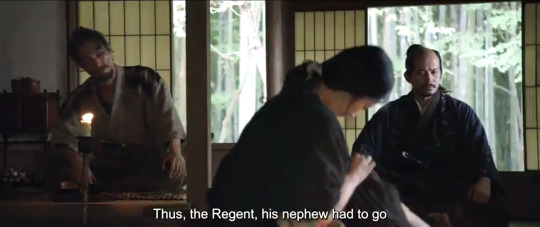
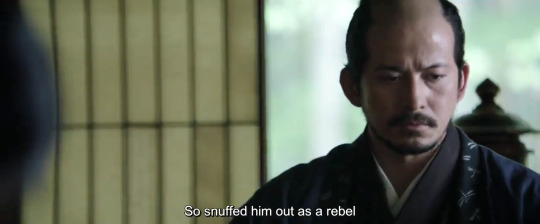
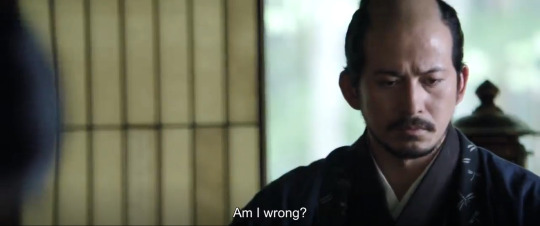
Sekigahara (2017)
"A peasant lord with a fetish for high born ladies, with no restraint and does what he likes, disgusts me."
#sekigahara#ishida mitsunari#junichi okada#shima sakon#takehiro hira#toyotomi hideyoshi#period drama#jidaigeki#taiga drama#japanese movie#j movie#japan
6 notes
·
View notes
Text
I will continually post any and all Sengoku Basara jokes I can edit into existence as long as I live.
2 notes
·
View notes
Note
Did Mitsunari Ishida screw up Sekigahara?
I think you can blame Mitsunari for the defeat at Sekigahara, not necessarily for his battle plan (which was actually fairly solid), but for his inability to manage his subordinate vassals. The Western Coalition was notorious fractious. Shima Sakon and Shimazu Yoshihiro were at loggerheads and Mitsunari refused to listen to Shinazu's complaints, leaving Shimazu ripe to be persuaded by his nephew Toyohisa to sit the battle out given that Tokugawa was more palatable as a leader. Other Toyotomi heavyweights were likewise alienated by Mitsunari - Kato Kiyamasa, Fukushima Masanori, and Kuroda Kanbei - all of whom Mitsunari made unflattering comments about when discussing their military readiness with Hideyoshi back when he was alive. Kobayakawa Hideaki was demoted on the personal recommendation of Mitsunari, which left him embittered, but then Tokugawa Ieyasu intervened personally to spare his career.
It's also worth noting that Mitsunari was not a member of the hereditary noble class. So for many of the older and prouder samurai, they were massively pissed at the idea of obeying this up-jumped bureaucrat.
Thanks for the question, Cle-Guy.
SomethingLikeALawyer, Hand of the King
13 notes
·
View notes
Text
Mitsunari joins the 'suddenly gets 2 vassals we didn't know existed' gang with his eternal route. Their names are Shima Sakon and Watanabe Shinnojou.
They handle affairs at Mitsunari's castle (Sawayama Castle) while he's away
Shinnojou has short hair and dignified features. Quite handsome and is popular with women.
Sakon is more muscular, has his hair tied back, and speaks in a very very very old fashioned samurai style (his personal pronoun is 某 それがし). He looks quite stern.
Sakon like sake, Shinnojou likes manjuu.
According to Hideyoshi, they were both very accomplished warlords in their own right and hated the thought of being subordinate to anyone. Hideyoshi had asked them to work for him but they refused, deciding to serve Mitsunari instead. That's part of the reason why some people are envious of Mitsunari.
They bicker a lot. But also are like 100% committed to serving Mitsunari. When Mitsunari asks them to prepare a banquet so he can introduce Mai to everyone, they both literally break into a run to head to the castle to prepare for it (also since it's the first time Mitsunari ever suggested holding a banquet, ever)
Mitsunari doesn't refer to them with honorifics like he does with every other character, which shocks Mai. This was by request--they put clauses into their employment contracts that Mitsunari should not use honorifics for them.
As for the actual reason why: they were both famous enough for Hideyoshi to want them as his vassals. Mitsunari at that time had no qualifications or any reputation to speak of. It would have made him look even worse in the eyes of others if he was speaking so deferentially to people who were supposed to be his vassals. So the two of them made sure to get Mitsunari to speak casually to them in order to improve his reputation in the eyes of others.
47 notes
·
View notes
Text
Fun fact I learned tonight: before starring together in FX’s Shogun, Takehiro Hira (Ishido) and Tokuma Nishioka (Hiromatsu) were both in the 2017 movie Sekigahara, as Shima Sakon and Maeda Toshiie respectively.
#I only just recognized Tokuma while rewatching this tonight#btw Sekigahara is awesome and I highly recommend it if you’re into the Sengoku period/the history behind the Shogun series#it’s rapidly becoming one of my favorite movies#Sekigahara#Shogun
9 notes
·
View notes
Text
Koei Warriors Retrospective Part 9: Samurai Warriors 2



Samurai Warriors 2 (戦国無双2) Platforms: PlayStation 2, Xbox 360, PC Release dates: Japan: 24 February 2006 (PS2), 17 August 2006 (Xbox 360), 11 July 2008 (PC) USA: 19 September 2006 (PS2), 19 September 2006 (Xbox 360), 27 June 2008 (PC) Europe: 22 September 2006 (PS2), 22 September 2006 (Xbox 360), 27 June 2008 (PC)
For years, what I knew about this game and the Samurai Warriors series in general came from the Warriors Orochi games. I didn't know a lot about the figures or battles of Sengoku era Japan unless I researched it on Wikipedia or eventually played the games.
While writing my personal project in 2014, the order of adapted battles in the story for that year went as follows: Mikatagahara, Odawara, Nagashino, Shizugatake, Okehazama, Komaki-Nagakute, Sekigahara, Ōsaka and Honnōji. If I had a more proper understanding of the game and the era, I probably would have done those things in order, but then again I'm just making up my story and not entirely adapting history.
Like how Dynasty Warriors 5 was made more historical than previous games, Samurai Warriors 2 was the equivalent for its series. This game goes past Nobunaga's era to focus on Hideyoshi's unification of the land and the Battle of Sekigahara, introducing characters associated with said battles. The visuals are made golden to contrast the darker colours of the previous game.
Let's get into the guts of it right after the break.
Samurai Warriors 2
Starting off with the characters now, and one thing to note is that the character lineups are not consistent between games as characters have been cut and reintroduced as the series goes on. As such, Goemon Ishikawa, Kunoichi and Yoshimoto Imagawa have been cut from this game, but their images can still be seen in Sugoroku and the Battle of Okehazama is still mentioned at the start of the Story Mode for related officers.
Okuni and Ranmaru Mori are still in this game, but they have no Story Modes. Okuni is unlocked by winning a game of Sugoroku while Ranmaru is unlocked by playing the first two Mitsuhide and Ranmaru's Requests in Survival Mode. Their fourth (and later fifth) weapons are also unlocked in Survival Mode as well.
Here are the new characters debuting in this game:
Ieyasu Tokugawa (PC'd)
Mitsunari Ishida
Nagamasa Azai (PC'd)
Sakon Shima
Yoshihiro Shimazu
Ginchiyo Tachibana
Kanetsugu Naoe
Nene
Kotarō Fūma
Musashi Miyamoto
Kojirō Sasaki (NPC)
Katsuie Shibata (NPC)
As listed above, Ieyasu Tokugawa and Nagamasa Azai are now made into playable characters, with Nagamasa's seiyuu changing from Takayuki Sasada in 1 to Hiroshi Kamiya from this game onwards. Nene essentially replaces Kunoichi's role as a female shinobi in this game. Yoshihiro and Ginchiyo's introduction also marks the introduction of the clans of Kyūshū, most notably the Shimazu and the Tachibana (through the Ōtomo clan). Katsuie Shibata and Kojirō Sasaki are the new NPCs appearing in this game; they can be unlocked as bodyguards for 6,400 gold in the shop after clearing a mission in Survival Mode. The narrator in the Japanese dub has been changed to Daisuke Gōri, who also voices Shingen Takeda.
Hideyoshi Hashiba is now known as Hideyoshi Toyotomi from this game onwards, with his seiyuu changing from Munehiro Tokita to Hideo Ishikawa. Historically, the name Toyotomi was granted to Hideyoshi and his clan by the Emperor in 1586. In this game, Hideyoshi's surname is never mentioned and he is only known by his former name when he's an ally or enemy before the Conquest of Kyūshū (Shikoku in XL); when you play as him, he will always be known by his new name no matter what battle you play. Later games would make the distinction clearer and more accurate, with Hideyoshi being known under Hashiba or Toyotomi depending on what year the battle took place (except for the stages where he wasn't originally featured in 3 in which case is is always known under Toyotomi).
Story Mode is made up of five (individualised) stages per character (no splitting paths or special conditions) with an extra Gaiden/Dream stage after completing the first five. Ieyasu and Mitsunari, being the leading figures at the Battle of Sekigahara, get a sixth story stage. For Kenshin, Oichi, Magoichi, Mitsunari and Yoshihiro, their Dream stages are unlocked after also fully clearing the Story Modes for Shingen, Nō, Masamune, Kanetsugu and Yukimura. The stages Village Rescue (set in Saika) and Pirate Hunt (set at Ōsaka Bay) are used as filler stages for 10 characters (including Kojirō in XL).
Free Mode is streamlined from how it was in the first game; each (or rather, most) battles have only two sides to play as and they utilise one character's version of each battle from Story Mode (with some exceptions depending on who you play as). Reused stages and Dream stages are excluded in this mode. One thing you will notice is that Odawara Castle has two versions for the west and east sides, though I wish they didn't name both versions as Siege of Odawara Castle (小田原城攻略戦) even though it is technically correct. All battles are one part only (thank god), with castles being incorporated seamlessly onto the maps.
Although battle objectives/missions still exist, battles are not entirely defined by them, meaning that objectives only trigger when you approach certain areas or officers. Also, for the first time, there are no subofficers listed in the officer/Unit Info list, meaning that player characters are listed individually in the list. If you're not a listed officer in the battle, you are shown at the bottom of the list, which is still better than being listed under the commander as "Player 1" or "Player 2". Third-party armies are now displayed in a separate list to the enemy army so more than 12 enemy units can be placed on the map.
Speaking of missions and Odawara, the west map features a mission where you have to defend a siege ramp. The siege ramp in that stage has got to be the weakest siege ramp ever because every enemy that comes near it will try to attack it and it gets destroyed if you leave it alone for more than 30 seconds. The Battle of Chencang in DW5 was less intense in comparison.
Survival Mode continues from the last game. Instead of offering two (or three) modes to choose from, you're given four missions to choose, some of them free and some of them paid. Each mission has five floors and you have the option to save after each one. In the free missions, you have Search for a Hero (強き者求む) which is just randomised missions, or the request storylines from Ranmaru, Mitsuhide and Keiji which cover you for the first 50 floors.
Once you get to that point, you're able to skip up to floor 51 on a new playthrough by paying a fee. The game goes up to floor 100 but you can continue on if you want to. Floor 71 has missions to unlock two rare horses, Persian Mare and Moon Child (Hoshōtsukige/放生月毛). Floor 76 has missions to unlock Katsuie and Kojirō. Also on floor 71 along with 86 and 96 are missions to unlock three Level 4 skills, but you need to have your character's respective Level 3 skills before attempting to unlock them otherwise you're just wasting your time. The good thing is that once you've done this for one character, you don't have to do this again for everyone else. When you get those Level 3 skills, you can just buy the Level 4 skills at the shop.
Sugoroku is a unique mode in that it's a Monopoly-esque game unlike the traditional Japanese board games. You play with four opponents (human or CPU) and the overall objective is to be the first player to achieve a particular gold amount set at the beginning (from 5,000 to 50,000 gold). You can choose between a small map covering only Honshū or a large map covering all of Japan.
As you go around the board, your focus is to obtain three flags scattered randomly on the map and return to home base to move up a rank. While you do this, you buy unoccupied territories to claim rent from the other players and take occupied territories by challenging their owners in one of six different challenges (provided without a separate Challenge Mode).
If you land on a shrine, you'll get to roll two dice to determine what happens to you; you might earn gold, increase land prices (fucking Asian real estate developers lol), take another turn with one or two dice, lose gold, teleport to another square or make things happen to everyone. If you roll a double here, you're taken to achieve a goal in a challenge; completing it will give you 100 gold, but failing it will cause that reward to be rolled over for the next double roll challenge. The weird thing about the shrine dice rolls is that it's hard to determine which die will determine which category or challenge until they land and rearrange themselves (ie, if die 1 lands on the right and it decides the left number, vice versa with die 2). If they made it so you roll one die at a time or made both dice different colours, then you could have a better idea of what to expect.
This game does take some time to play, even for a 5,000 gold target. The bad thing about this is that you can't save and move onto something different, even in a single player game, but that's what emulators are thankfully good for. At the end of the game, you get about 12.5% of your final gold total to use in the rest of the game, which is just paltry for the effort required to play it. I'll come back to gold earnings later.
In battle, Special Skills are a new mechanic introduced in this game, triggered by pressing R1, then pressing either Square or Triangle. This functionality replaces ranged attacks from the first game. With the introduction of Special Skills, a very small number of characters are able to summon horses, those characters being Yukimura and Keiji (and later Toshiie in XL). If you ask me, it is a bit unfair that only three characters can summon their horses, but rest assured that this does get fixed in future titles.
Two new moveset types have also been introduced for characters in addition to the Charge Attack moveset from the last game, namely the Normal Attack moveset and Special Skill movesets. Some characters from the last game retain their Charge Attack moveset while others have their attacks reassigned for the Normal Attack moveset or nerfed for the Special Skill moveset. For the Normal Attack moveset, Normal Attacks go up to N12 while Charge Attacks go up to C8 and are single-tiered. For the Special Skill moveset, it remains similar to the Charge Attack moveset except the Charge Attacks are only double-tiered, but both Special Skills are triple-tiered.
The Musou bar is upgradable to three levels, with the maximum reached by the time you reach the maximum level of 50. You can unleash a Musou Attack as long as the first section of the bar is filled, meaning that you can only manually charge it up to that point (but let's face it, who does that anyway). The first and second level Musous only affect the colour of the finishing shockwave (from blue to green) while the third level Musou adds a secondary effect depending on the character (while also changing the finishing shockwave to yellow). The same applies to the True Musou Attack as well.
Holding down the Circle button on horseback no longer swings your weapon like it did in the last game and DW, but you can still perform Normal and Charge Attacks while charging around. This game would begin a trend of horseback Musous just being bland rampages.
The right analog stick can now be used to rotate the camera, something that would be included in future Warriors games from this point forward.
Between battles, you will be able to access the shop to upgrade your weapons and skills. The shop is run by Saya, the master's daughter from the first game's New Officer Mode (who also slaps Magoichi in the first movie of his Story Mode). She will continue to make appearances as the shopkeeper in future games.
Four levels of weapons continue to be offered from the previous game. Weapons can have up to eight slots for attributes (going up to level 20 in a similar manner to DW5) and they can also have an element that is activated when you have one level filled in the Musou Gauge. The Dark element from the last game has been replaced with the Wind and Demon/Death elements. You can upgrade your weapon with a random ability for the price of 100n + 400, where n is the number of times you've upgraded your weapon. There is a chance that you may get a duplicate attribute; the stats do stack but you can have a maximum of 3 copies for that particular attribute.
Skills are a new mechanic that replaces the item system from the first game. Characters can learn skills by buying them in the shop, levelling up or stealing (or rather, learning in the English version) from enemy officers. Excluding rare skills, you'd be looking at spending 81,600 gold to buy all non-rare skills up to level 3, then another 30,000 gold to get the three level 4 skills. Rare skills can be learnt on Hard difficulty and above by defeating certain playable officers. When your character reaches a certain level (in a multiple of 10), they will learn a quasi-unique Self Skill. Skills can be turned on and off before starting a battle.
Bodyguards are also reduced to being a single officer instead of a group of four soldiers (also similar to DW5). They can be levelled up to a maximum level of 20. There are 10 classes of bodyguards and you can keep up to 8 of them (out of a total of 54), but if you were to hire everyone, you'd be looking at spending 153,900 gold. Once again, bodyguards only have voice lines when they are killed.
My main gripe about this game are the costs to purchase things in the shop when compared to the amount of money earned each battle. Amongst the collectible items in the game, you can collect up to 100 gold at a time, with level 4 Greed giving you a multiplier of 1.8 for a total of 180 gold. Given how much things in the shop cost, you can only really afford to do so much before you run out of money. Compound that with the fact that there are 26 playable characters in this game (32 with Xtreme Legends) and it does take a while for you to get your character decently powered-up. Of course, if you've spent a lot of time on this game (particularly 18 years ago when this game was first released) then this will be nothing to you, but this is coming from me who's only been playing it for two years in the hope of eventually reviewing it.
New Officer Mode has been removed in this game, but the closest thing to playing the CAW sword, spear and naginata movesets, along with the movesets of various troop types, is by using one of Nene's Special Skills, which can make her disguise herself as a nearby soldier or officer.
No new voice lines have been recorded for Survival Mode (like with the last game), so the only voices you'll be hearing are those that were already in the rest of the game. Some lines have been recorded for player characters in Sugoroku, but I'm not sure if they were also heard in other areas of the game. This can't be traced back to lazy localisation (we haven't even got to that point yet) because I've been playing this in Japanese and I've experienced the same thing, though I suppose if the lines were voiced in the Japanese version and not the English then this issue wouldn't have stood out that much and I probably wouldn't have noticed it when I did.
Now let's talk about the English localisation of this game and hmm... are those the English voice actors being credited in the credits? Breaking with what should be tradition for Warriors games, the localisation for this game was done in Canada, the actors provided by Total Casting and the dubbing produced by Agile Sound, both being subsidiaries of Montreal-based Agile Entertainment. No justification is given as to why Koei decided to use another company instead of Voicegroup for localisation, but a lot of fans I've seen do seem to like the English dub for this game. As someone who came to this series after playing Warriors Orochi however, I honestly can't get used to it as it sounds kind of bland in some places, but hey, I guess that's my toxic nostalgia talking. Looking forward though, I can see how some character lines from this game inspired those in Warriors Orochi.
For the first time, the PC port of SW2 does not have any enhancements like DW4 Hyper or DW5 Special. Once again, given the timing of that release, the lack of Xtreme Legends features in PC ports continues to confound and infuriate.
Samurai Warriors 2 Xtreme Legends
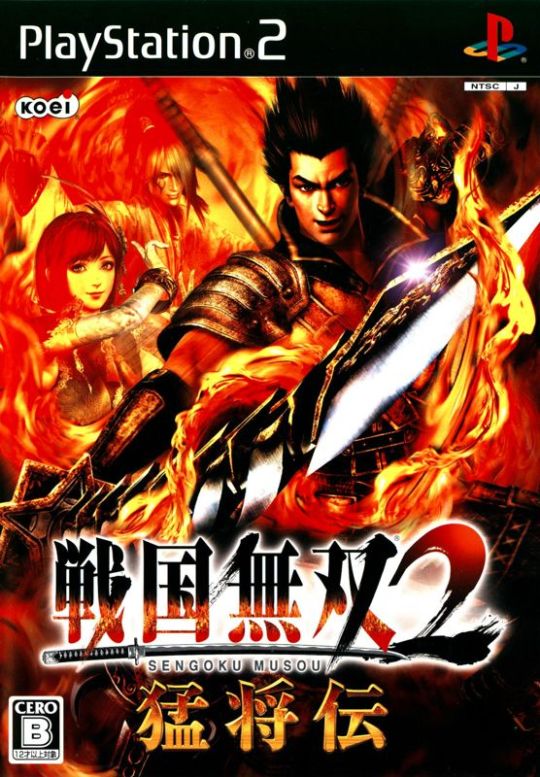
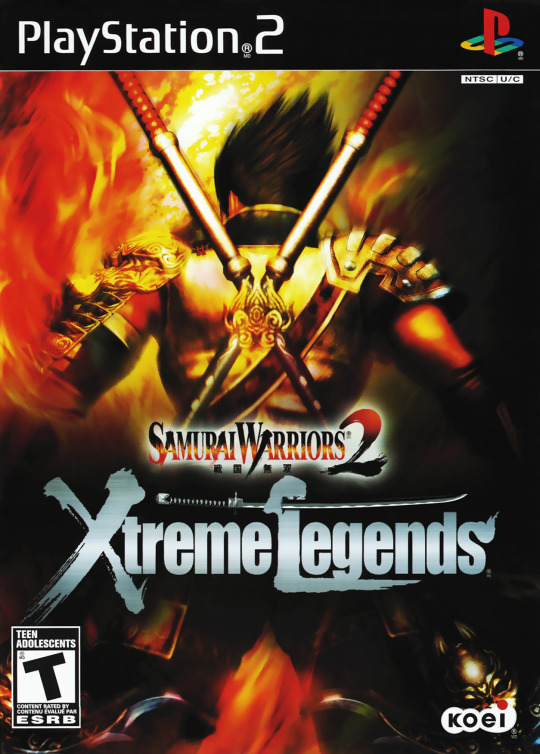
Samurai Warriors 2 Xtreme Legends (戦国無双2 猛将伝) Platforms: PlayStation 2, Xbox 360 Release dates: Japan: 23 August 2007 (PS2), 14 April 2008 (Xbox 360) USA: 18 March 2008 (PS2), 16 April 2008 (Xbox 360) Europe: 28 March 2008 (PS2), 16 April 2008 (Xbox 360)
Uniquely, the Xtreme Legends expansion for SW2 was released after its Empires spinoff, explaining the nearly 18-month gap between the vanilla game and the expansion as opposed to the 6 month gap in the case of DW4 and 5. At least DW3XL came out nearly a year after its vanilla release.
This game also marks the first time that (the full content of) an Xtreme Legends expansion is made available on a non-Sony console. With the Xbox Live Marketplace being the first digital game distribution shopfront of its kind, SW2XL was made available on the Xbox 360 as DLC in April 2008, it being compatible with both the physical and digital versions of the vanilla game. Such a shame it's no longer available for purchase now that the marketplace closed down at the end of July 2024.
In Japan, the DLC release was a month after a physical version was sold on 19 March 2008 in the form of a "with Xtreme Legends" Complete Edition. This also begins a confusing tradition of Complete Edition games being released alongside Xtreme Legends expansions exclusively in Japan. Such a thing wouldn't happen in the West until DW8.
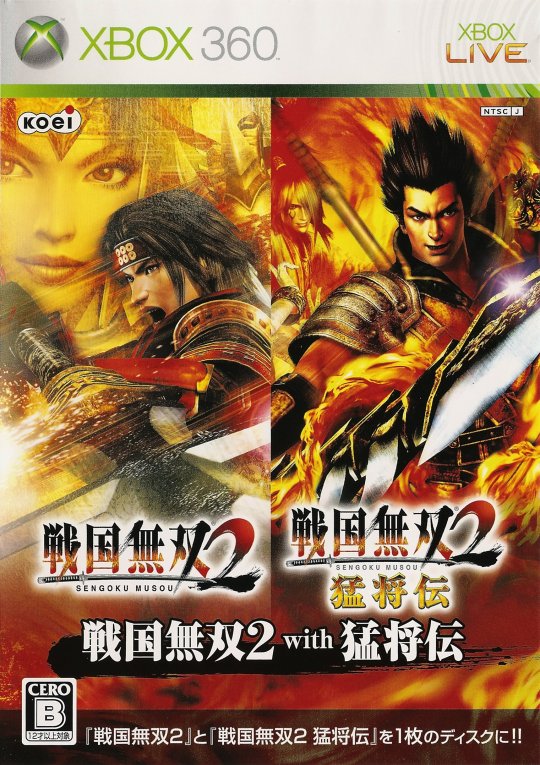
Some PS2 players have reported issues with this game, particularly those with older "fat" models and Slim models, due to the game being on a dual layer DVD-9 disc and the laser reader sometimes having issues with it.
5 new playable characters make their debut in this game:
Toshiie Maeda
Motochika Chōsokabe
Gracia
Kojirō Sasaki
Katsuie Shibata
Kojirō and Katsuie were previously made playable in Empires, but this game gives them new unique weapons. Motochika's introduction introduces the Chōsokabe clan of the Shikoku region as well. Gracia, the daughter of Mitsuhide Akechi also known as Tama(ko), is never named by any of the characters in any game she appears in. Granted, Gracia is her Catholic name and she wasn't baptised until 1587 when Hideyoshi was conquering Kyūshū, but it's kind of weird to have characters refer to her as "Mitsuhide's daughter" or something vague.
Yoshimoto Imagawa makes a return in the expansion after being cut from the vanilla game. As such, Okehazama returns as a stage in this game and a new stage, Shikoku, is introduced.
Toshiie Maeda is an example of a generic officer being upgraded to a playable character in the expansion. However, the extent of how he is upgraded when seems to vary. See, the assumption is that when a generic officer is made playable in an expansion, that officer's appearance in other stages is upgraded to their playable appearance (which does happen in later games). In the case of Toshiie in this game, some of his appearances are straight-up upgrades, but in some stages he is replaced by another generic Oda officer like Nagahide Niwa, Nagayoshi Mori or Nagachika Kanamori. This happens regardless of whether Toshiie was an allied or enemy officer in the vanilla game.
So yeah, all the Xtreme Legends trimmings are there, from Story Modes for the new characters, Novice and Expert difficulties to fifth weapons for all characters, including Ranmaru and Okuni which once again, are only unlockable in Survival Mode. Levels are increased to 70 for player characters and 30 for bodyguards.
In regards to Musou Mode, the final cutscene movie of Toshiie's Musou Mode has been changed in Western releases for the Xbox 360 and the European release for the PS2, but it is intact in the US release for the PS2 and all Japanese releases. The original cutscene shows Toshiie, in grief over Katsuie's death, punching out Hideyoshi while proclaiming his new duty to watch over him and share the burden he bears. In the changed versions, the cutscene was changed to be a shortened replay of Katsuie's final cutscene where he farewells Toshiie before resigning himself to his fate inside a burning Kitanoshō Castle. I presume this decision was made for censorship reasons due to violence, which is kind of weird considering the nature of this game and the fact that Toshiie gets punched himself in earlier cutscene movies.
New charge attacks are introduced for all characters, namely the C5 for the Charge Attack and Special Skill movesets and the C9 for Normal Attack movesets. They are all single tier and some of those attacks may also incorporate elements of their Special Skills.
Two new sections have been added to the shop. When your character reaches level 19, Special Skills will be available for purchase, but note that buying one only buys it for that character and not everyone else. To buy all 15 Special Skills you'd be looking at spending 417,000 gold per character. If you don't want to spend that much, then take note that some characters' Self Skills are the same as Special Skills such as Finesse/Spring, Resist/Balance, Omniscience/Awareness, Pressure/Repel and Resist/Confidence. Only one Special or Self Skill can be equipped on a character.
The other new section in the shop is Orb Synthesis. Using orbs, you can directly add attributes of +20 to your weapon or even change your weapon's element, even for fourth and fifth weapons and weapons with no attribute slots. Orbs are mostly obtained through Mercenary Mode, but in rare cases they can also be found in Story and Free Modes (though I suppose the chances are higher on harder difficulties). The cost to do this is x*y where 0 < x < 9 for the number of slots and y < 5 for the weapon level, which potentially makes it more expensive than when you upgrade a weapon normally. Weapons without attribute slots (usually initial weapons) are treated as if they had one and fifth weapons are charged the same as fourth weapons. The maximum limit of three copies per attribute still applies.
Mercenary Mode is the new unique mode added to this game. It serves as a great grinding mode for experience, gold and orbs, plus this is arguably easier than Xtreme Mode in DW4XL and 5XL, probably because it carries over your gold and character stats from the rest of the game.
After selecting your character, you can choose from three battles that all have different objectives and handicaps, such as starting with low health, multiplied damage or nullified guarding. You earn gems after each battle and as rewards for completing special missions.
Guards can also be hired between battles for 10 gems each. You can deploy two guards at a time with an additional three in reserve. After playing or deploying a character for a certain amount of turns (certain rewards can reduce this), they are able to be levelled up, granting them an additional skill. Skills include automatically opening gates when approaching them, using some of your Musou gauge to create a barrier, earning an extra gem every 50 KOs and nullifying enemy quagmires (giggity)/birdlimes/tar traps, poison attacks and fire attacks. Skills apply from both the player character and the guards deployed, so it's a good idea to ensure you have as many bases covered as you can.
As you play battles with clans, they will give you rewards the more you play with them. When you play 7 battles under the same clan, you will be offered to join them as a retainer for 50 gems. Once you do, no other clan will give you rewards while the clan you joined will continue giving you rewards the more battles you play under them.
Special events will appear in the menu throughout your playthrough. Some of these may be rewards from various people, requests for assistance that unlock special missions, or offerings that unlock Precious Swords. I'm not sure if those missions expire, but if you're aiming for the second ending, then it's a good idea to complete them as soon as you have the gems for them.
There are two ways to clear Mercenary Mode. The first way is to join a clan and fight another 7 battles under them for a total of 14, at which point you can fight a battle to unite the land and clear the mode. The second way is to collect all ten Precious Swords and unlock a battle for supremacy, where you will have to fight three officers in hyper mode to clear the battle. This battle doesn't happen until you reach battle 100 because of how the Precious Swords are collected and there's nothing special after that. As such, there is no reason to replay with the second way other than to get the associated achievements/trophies because the first way is faster.
Like with Survival Mode in the vanilla game, no new voice lines have been recorded for Mercenary Mode. Is it so much to ask for consistency?
Samurai Warriors 2 Xtreme Legends HD Edition (Sengoku Musou 2 with Moushouden HD Ver.)
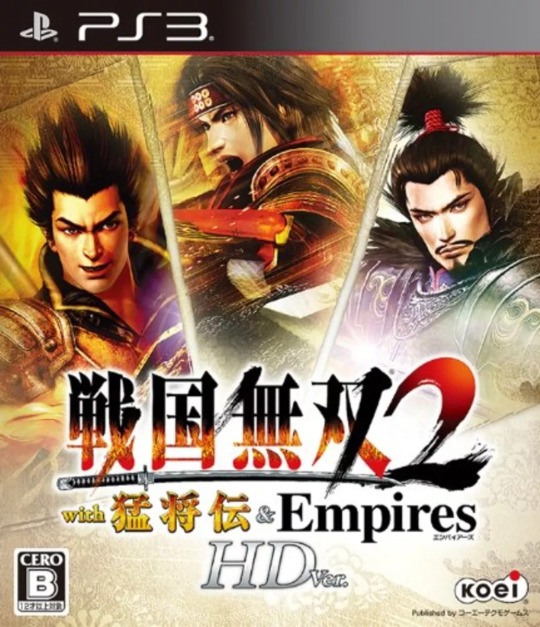
Samurai Warriors 2 Xtreme Legends HD Edition (戦国無双2 with 猛将伝 HD Ver.) Platforms: PlayStation 3, PlayStation Vita Release dates: Japan: 24 October 2013
This is the version of the game I've been playing for the purposes of this review. Why did I pick this version for it? Well, I was able to get most of the Samurai Warriors games on the PS3 anyway, so why not get this version of SW2 and make RPCS3 my Samurai Warriors hub? Sure, I could play the Xbox 360 version for a widescreen experience that's closer to the original PS2 release, but why the hell should I go to the effort of setting up Xenia for it when I could just get this?
In 2013, Koei (Tecmo) rereleased SW2XL alongside Empires in an HD Edition for the PS3 and PS Vita. Both games are sold separately on the PlayStation Store, but on the PS3, they can be bundled into a single digital package or a physical disc, meaning that when you launch the game, you are greeted with a launcher that allows you to select between the two games. This also allows you to switch between the games by going back out of the main menu and into the launcher without having to change discs or exit to the Home Screen/XMB. Save data and trophies remain separate between the two games.
The main enhancement of the HD version is that this version takes advantage of the PS3's capabilities to deliver improved graphics and more enemies on screen. Apparently this version also makes use of the AI engine from the next game, Samurai Warriors 3, and while I haven't seen any Japanese sources to confirm this, I can say that you do get a bit of that feeling, particularly in Empires. All modes and characters are available from the start.
With this game also being available on the Vita, ad-hoc multiplayer gameplay is available (Sugoroku only allows you to have two players playing wirelessly against two CPU players). Cross-save functionality is also available between the PS3 and Vita through the PlayStation Network. This would also become a thing for later games, although in general, I wish Sony made it so that save files can easily be copied between different consoles, like the PS3 and Vita via USB, without necessarily having to be logged into the PSN. However, this would essentially require companies like Sony to believe in the philosophy of free and open source software (FOSS).
If there's one thing I could say about this port, it would be, WHY WASN'T THIS PORT RELEASED TO THE WEST? The localisation already exists, so it would be easy to publish a localised port of a remastered game. Considering what happened with the Western release of Samurai Warriors 3, this game could have been an easy cash grab to make up for it while also being a nostalgia trip for people who played the game on the PS2 or Xbox 360. Koei (Tecmo) aren't the only main factor in this as Sony also plays a factor in the decision to publish games and ports. This is something I'll come back to when we cover Warriors Orochi Z.
Rant: Why I play in Japanese/MobileJOY
Before I started this retrospective, I stated that I would be playing the Japanese or Asian versions of the games over the English versions where possible. There are multiple reasons for this.
Firstly, there are some games and ports that were only available in Japan/Asia, such as SW2XLHD, SW3Z and WOZ. Secondly, and this ties into the first reason, I don't want to waste time setting up and going between other emulators (like Dolphin for SW3 on the Wii or Cemu for WO3 Hyper on the Wii U) to play the games in English. As it is, I'm already playing Xtreme Legends expansions on one console per game to save time and effort.
Thirdly, and this reason is more for the later games, I play Japanese/Asian versions because I'm disappointed with Koei Tecmo's treatment of localisations, not just with the lack of English dubbing, but their translation decisions and errors. "But Azuma, translation errors existed in earlier games as well!" Yes, I know and I have noticed them despite their rarity, but I'm bringing this to the forefront because of Koei Tecmo's complacency to these incomplete localisations and apathy to their Western fanbase in regards to this. I'll talk more about this when we get to Warriors Orochi 3.
The main exception to this rule mostly involve games that I already have on portable consoles, like the first few Warriors PSP games. Playing older games in Japanese is mostly for consistency with later games. In the case of the PC games, it's a mixed bag. I already had DW8XL and DW8E in English and I recently downloaded the Chinese versions for them, DW6 and WOZ are in Chinese and the other games have language options which I might utilise, but for the most part I play in Japanese or Chinese.
Now in regards to playing with the Japanese version, you might notice a section in Camp or Options called MobileJOY (like how the "import" function is also known as MIXJOY). Basically what it involves is that you go onto Koei's Musou Mobile website (with your phone) and enter the code on the screen, then it will give you a password that you put onto the screen to unlock the bonuses, which typically involve in-game items. Some games also have additional tie-ins to GREE's 100-man-nin collaboration series, such as with Samurai Warriors 3 Empires where you can unlock characters and rare items in its 100-man-nin counterpart, and in turn, you can unlock special buildings from that game in this one.
The Musou Mobile service, and with it MobileJOY, was discontinued in March 2020. Presuming that the password is generated by the game every time it is booted or you go into the MobileJOY page, that means that the game would also have the password to unlock the bonuses, so technically all that is needed would be the formula to cracking the code. But it doesn't seem to unlock anything special so maybe that's why people don't seem to want to bother with it.
In spite of Koei's decision to use a Canadian company to localise this game (and one from Quebec no less), Samurai Warriors 2 was the certified hood classic that defined the childhoods of its fans just as Dynasty Warriors 5 defined those of others including myself. It apparently had such an impact that it got Koei to get off their asses and release its Xtreme Legends expansion on the Xbox 360 before later remastering an already HD-capable release to the PS3 and PS Vita seven years after its original release. If SW1 is comparable to DW3 and DW4, then SW2 is comparable to DW5, something that would be cemented in a later crossover spinoff series.
Empires is up next for review followed by Katana, those being the spinoffs for SW2.
#samurai warriors#samurai warriors 2#samurai warriors 2 xtreme legends#koei tecmo#koei warriors#koei warriors retrospective
5 notes
·
View notes
Text

March 29: Happy 58th Birthday to Voice Actor Brian Beacock, who provided the English voices of the characters of Yumichika Ayasegawa on Bleach, Renzo Shima on Blue Exorcist, and both Sakon and Ukon on Naruto and later as Chojiro on both Naruto Shippuden and Boruto: Naruto Next Generations.
#Voice Actor#Brian Beacock#Bleach#Blue Exorcist#Naruto#Naruto Shippuden#Boruto Naruto Next Generations#Anime and Manga#Fandom Birthday#March 29 Birthdays
4 notes
·
View notes
Text
Nampō Roku, Book 7 (80): Concerning Lord Hino’s¹ Use of Kayari [蚊遣]² in the Roji.

80) Concerning [his connection with] Rikyū-koji, Hino Terusuke had become his disciple, and [they] frequently visited [each other]³.
On an evening in the summer, [Terusuke] set up a kayari-bi [蚊遣火] in his garden, in the shade under the trees⁴. When [Ri]kyū saw this [he said] “indeed, isn’t that most tasteful!” -- he was deeply moved⁵.
Since then [it has become the practice that], in a secluded place in the roji [and] near the koshi-kake, in a suitable place in the shade under the trees, the kayari should be set to smoldering [in order to keep the area free of mosquitoes]⁶.
_________________________
◎ The toku-shu shahon version of this entry agrees with the Enkaku-ji manuscript. However, according to both Tanaka Senshō and Shibayama Fugen -- and rather curiously -- the genpon text substitutes the name of Lord Asukai [飛鳥井殿] (perhaps Asukai Masakata [飛鳥井雅賢; 1585 ~ 1626], who held the lower grade of the junior fourth rank, and was Sakon-e no shosho [左近衛少将], equivalent to lieutenant-general of the Sakon [Left] Guards unit) for that of Hino Terusuke [日野輝資; 1555 ~ 1623]. This is strange because, while Lord Hino is known to have been a disciple of Rikyū (he is mentioned several times in the Nampō Roku in this capacity), a connection between Rikyū and Lord Asukai is less well documented*. ___________ *In 1609, Asakai Masakata was exiled to Naka-no-shima [中之島] in Oki [隠岐] (a group of islands northwest of the border between Tottori and Shimane Prefectures) on account of having seduced one of the emperor’s ladies-in-waiting. Masakata died in exile later in 1626.
Masakata is not recorded to have had any interest in chanoyu, and there does not appear any other reason to associate Masakata with Rikyū.
The Asakai family was established during the Heian period, but they were always more closely associated with waka [和歌] and kemari [蹴鞠] than with other cultural activities. (Kemari, which appeared in something resembling its present form toward the end of the Heian period, is usually described as a kind of football; but the object of the game was to keep the ball in the air, and prevent it from touching the ground: after kicking the ball, that player had to intone an original waka before the ball was kicked again. As can be seen below, the participants usually wore casual court dress, as well as their lacquered caps of estate.)
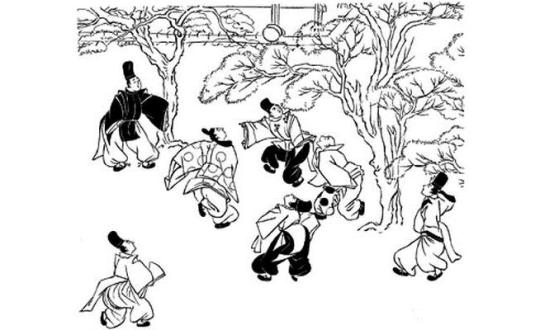
Members of the Asakai family were the instructors of kemari to the Ashikaga shōgun Yoshimasa and Yoshinao, and their courts. During the fifteenth century the Asakai also founded the Niraku school [二楽流] of calligraphy. Their fortunes seem to have declined in tandem with those of the Ashikaga house, so that they were remembered more for the scandal involving Masakata, than for other accomplishments during the sixteenth and seventeenth centuries.
¹Hino Terusuke [日野輝資; 1555 ~ 1623] was a scion of the hereditary court nobility (kuge [公卿]), who served in various governmental posts, ultimately being appointed Gon-dainagon [権大納言] (Supernumerary Grand Counselor of State) in 1597, at which time he was elevated to the senior grade of the Second Rank. He was thus the highest ranking among Rikyū's noble disciples.
Terusuke retired from government service in the Fifth Month of Keichō 12 [慶長十二年] (1607) and became nyūdō, taking the name Yuishin-in [唯心院]. Nevertheless, it seems that he remained a counselor to both Tokugawa Ieyasu and his son Hidetada until his death.
²Kayari [蚊遣] means mosquito repellent, and usually referred to burning pine-needles or dried mugwort (or an incense compounded from the latter) for this purpose. The practice had been employed at the Imperial Court since ancient times, but this occasion appears to have been the first time that it was used in the roji -- to rid the roji and koshi-kake of mosquitos during a chakai.
³Rikyū-koji ha, Hino Terusuke no montei ni natte, tsune ni mairare-keri [利休居士ハ、日野輝資ノ門弟ニ成テ、常ニ參ラレケリ].
Rikyū-koji ha [利休居士は] means concerning Rikyū-koji.
Koji [居士] was the “non-title” (meaning a Buddhist layman, or lay believer -- that is, a follower who had not formally taken the tonsure) that was bestowed on Rikyū in early 1586, so he could enter the Imperial Palace and assist* Hideyoshi’s service of tea to the Emperor Ōgimachi [正親町天皇; 1517 ~ 1593 -- his reign extended from the 27th day of the Tenth Month of Kōji 3 [弘治三年], 1557, to the 7th day of the Eleventh Month of Tenshō 14 [天正十四年], 1586] in Hideyoshi’s golden tearoom (which was set up on the deep veranda of one of the halls within the palace compound).
Hino Terusuke no montei ni natte [日野輝資の門弟になって]: this phrase is grammatically irregular; but the meaning seems to be that Hino Terusuke was one of Rikyū’s disciples†.
Tsune ni mairare-keri [常に參られけり] means that (he) frequently desired to visit‡ -- while this is usually understood to mean that Terusuke often visited Rikyū, the context of this entry implies that the visits between the two were reciprocal.
Here, and throughout the entire passage, he toku-shu shahon agrees exactly with the Enkaku-ji text**. ___________ *Despite occasional assertions to the contrary that are found in the popular tea histories, Rikyū’s job on this occasion was primarily to grind the tea, help prepare the utensils, and take care of various things that had to be done in the preparation area (such as emptying the koboshi, and returning it after cleaning, so Hideyoshi could replace it on the daisu), and sit in the vicinity of the sadō-guchi, ready to offer any advice that Hideyoshi might have needed. The surviving accounts suggest that the daisu-temae that Hideyoshi employed on this occasion used a bon-chaire and dai-temmoku, and everything used was either made of gold, or made of wood covered with gold (the temmoku was made in that way, since a gilded ceramic bowl would have been too heavy, and potentially could have been too hot to hold comfortably).
On this occasion, Rikyū did not meet the Emperor or serve him tea while Hideyoshi sat and chatted with the Emperor (the way some popular versions of the story suggest). Indeed, the Emperor would have been entirely unaware of Rikyū’s presence.
†Linguistically, the construction of this phrase seems to suggest that Rikyū became Lord Hino’s disciple, which is nonsense.
‡The suffix -keri [けり] might be interpreted to suggest that this was something that happened in the past, something that had already ceased to occur by the time that this text was written down.
And, indeed, as Lord Hino rose higher and higher in the government, he would have had correspondingly less time to indulge in things like chanoyu.
**As does the genpon text -- except that, as noted above, the genpon version inserts the name Asukai-dono [飛鳥井殿], Lord Asukai, in place of Hino Terusuke [日野輝資]: Rikyū-koji ha, Asukai-dono no montei ni natte, tsune ni mairare-keri [利休居士ハ、飛鳥井殿ノ門弟ニ成テ、常ニ參ラレケリ].
There does not seem to be any historical justification that might account for this change in the text, however, so it is difficult to imagine how the substitution came to be made by the editors of the genpon edition. Tanaka Senshō, however, argues that the reason for the name change was because of the Asakai family’s traditional connection with kemari (that was mentioned in the sub-note below my introduction). Because the Asakai were the national experts, the men of their family would have had to practice kemari out-of-doors throughout the year. During the summer months, because of the discomfort caused by mosquitoes (not only while playing, but also while resting between innings in the shade of the trees in the garden), they began to burn mosquito repellent in the garden to make their long practice sessions more endurable. Nevertheless, this does not give us any clues as to why Rikyū would have been visiting them, or why he would have been so deeply impressed by the idea of burning kayari in the garden.
⁴Natsu yū-gata, o-niwa no ko-kage ni kayari-bi wo tateraretari wo [夏ノ夕方、御庭ノ木陰ニ蚊遣火ヲタテラレタルヲ].
Natsu yū-gata [夏の夕方] means on an evening during the summer.
O-niwa [御庭]: the honorific o- [御] was probably used because Lord Hino was a member of the kuge [公卿], the hereditary court nobility, so the use of the polite form would indicate unambiguously that this garden was in his residence.
O-niwa no ko-kage ni kayari-bi wo tateraretari wo [御庭の木陰に蚊遣火を立てられたるを] means that in (Lord Hino’s) garden, in the shade of the trees*, a kayari-bi [蚊遣火]† was set up.

A kayari-bi was an openwork (usually ceramic) brazier (an Edo-period example of a kayari-bi that was made to be set on the floor of a room is shown above) in which either dried pine-needles, or stalks of dried mugwort (Artemisia princeps, and possibly other species)‡, were set to smoldering, since the smoke from these plants had mosquito-repelling properties.
However, by the point in the Edo period when this text was written, mosquito-repellent incense sticks (katori-senkō [蚊取線香]**), made from crushed mugwort mixed with charcoal powder, also seem to have been invented, so this entry could be referring to either form of kayari.
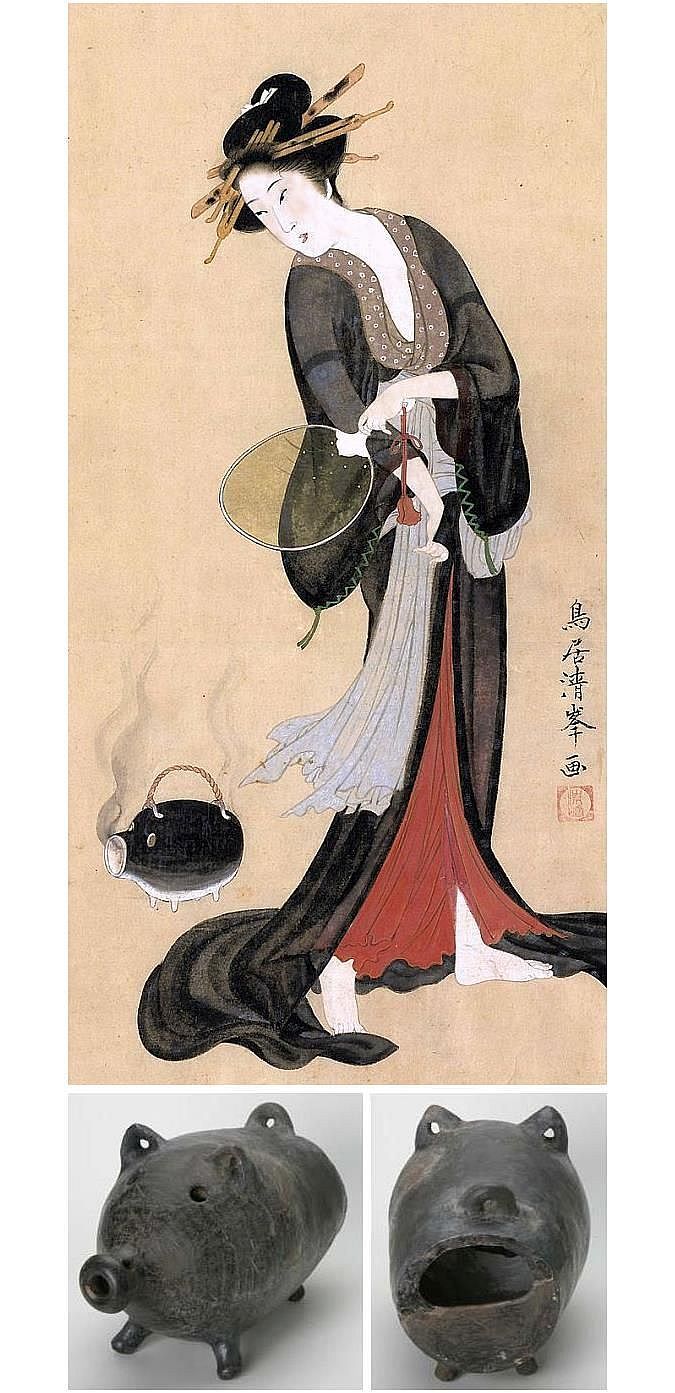
The above painting, titled Kayari-bijin [蚊遣美人] (“a Beauty with a kayari-bi”), by Torii Kiyomine [鳥居清峯; 1836 ~ 1867] shows how a handle was attached to another Edo-period example of a katori-bi (an antique example is shown below the painting -- the pine-needles, stalks of mugwort, or a coil of mosquito incense, would be placed inside through the large hole in the back side of the kayari-bi). The handle was used to carry the kayari-bi from place to place, as needed, to keep the mosquitos away††. __________ *Since the gathering during which this kayari-bi was set up in the roji was held in the evening, the shade from the trees is probably less important to the story than the fact that the kayari-bi was placed somewhere where it would not be seen. The purpose was, of course, to chase away the mosquitoes and other night insects from the vicinity of the koshi-kake and roji.
†With respect to this use of a kayari-bi in the roji, Tanaka Senshō comments:
Kayari de naku, eji-kago tote, niwa no tsūro ni kō wo taku-koto ha ko-rai aru. Ka no dō no tsuru ya, kamo nado wo tei-jō ni oite kō wo taku-koto ha, ko-rai okonawareta-koto de aru. Kono-koto kara, kayari wo omoi-tsuita no de arau ka. Roji ni kayari wo tateta-koto ha, mukashi to shite omoshiroi shu-mi de aru. Ima-doki ha, ryōri-ya no teien ni, katori-senkō ga takarete-iru ga, kore ha fūryū to ha ienu. Yahari, eji-kago nado suete, mukashi-fū no kayari-bi no kata ga omoshiroi to omou
[蚊遣でなく、衛士籠とて、庭の通路に香を炷く事は古来ある。彼の銅の鶴や、鴨抔を庭上に置いて香を炷く事は、古来行われた事である。此事から、蚊遣を思ひ付いたのであらうか。露地に蚊遣を立てた事は、昔として面���い趣味である。今時は、料理屋の庭園に、蚊取線香が炷かれているが、是は風流とは云ヘぬ。やはり、衛士籠抔据ゑて、昔風の蚊遣り火の方が面白いと思ふ].
“In the absence of a kayari, since ancient times it has been the practice that even [something like] an eji-kago [衛士籠] might be set up beside the garden path and used for burning incense. As for placing bronze cranes and ducks and the like in the garden for burning incense [to perfume the air], this has been done since ancient times. Perhaps this was how they came up with the idea of [burning] kayari? Setting up the kayari in the roji must have been a interesting way to amuse [oneself] in bygone days. Nowadays, katori-senkō is burned in the gardens of restaurants, but [I don’t] think this can be called tasteful. I think it would be much more interesting to set up an eji-kago and make use of this old-fashioned way of repelling mosquitos!”
An eji-kago [衛士籠] (the name means a sentry’s/gatekeeper’s basket -- by the light of which the guard was able to identify people approaching the gate for admittance) was (originally) an iron basket, suspended from or on some sort of stand or tripod (as can be seen below), in which wood was kindled for illumination. This arrangement was also referred to as a kagari-bi [篝火] -- as in the following Edo period illustration for chapter 54 of the Genji monogatari [源氏物語] (which sets the scene on a veranda whose garden is illuminated in this way). In the picture we see a line of kagari-bi (often translated as “flares”) set up along the bank of the garden stream, with the fires attended by underlings.
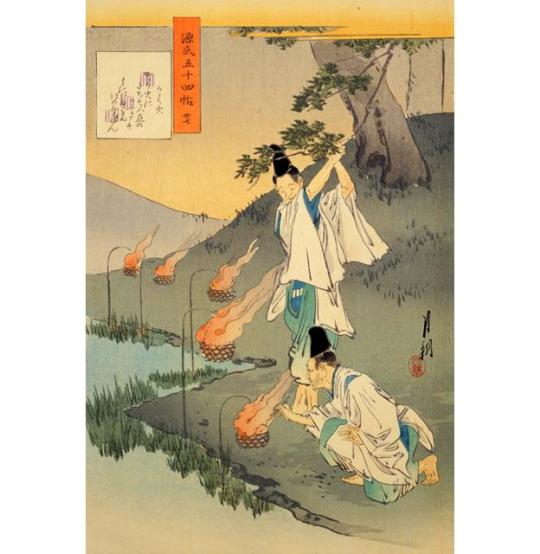
Here, it is unclear whether Tanaka believed that the smoke from the fire in the kagari-bi would be sufficient to drive the mosquitoes away, or whether he is using the word eji-kago to refer to a similar sort of arrangement -- albeit one in which pine needles or mugwort, or some other special material, would be burned in similar manner to produce the desired fumigatory or mosquito-repelling effect.
The reference that he makes to bronze cranes and ducks installed in the garden is either addressing the matter of the supports from which the containers of smoldering incense (usually crushed jin-kō [沈香] or kyara [伽羅], or blends based on these) were suspended (the bowls were taken in when incense was not being burned, leaving the bronze statues standing in the garden as decorative objects in their own right), or to bronze censors cast in these shapes (such as the one shown below) that were set out in the garden to perfume the air.
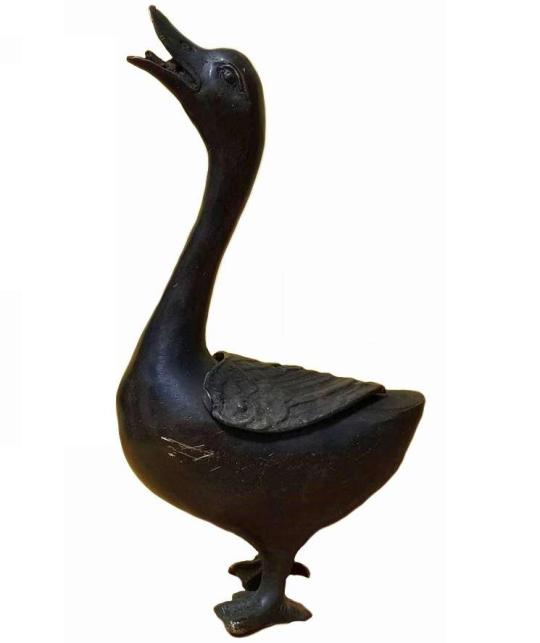
It might be added that most of the oldest tsuri-bune [釣り船] imported from Mogul India and China were originally made as hanging incense burners.
‡This plant is called yomogi [よもぎ = 蓬) in Japanese, and ssuk [쑥] in Korea. In addition to its mosquito-repellent qualities (in Korea, the plant was traditionally cultivated along the edge of the veranda, since even when living the essential oils volatilize into the air, deterring mosquitos; and in the autumn the stalks were cut down to the ground, and then suspended upside-down under the eves to dry for use as a kayari (fumigant) the next year). Mugwort is also used in both country’s cuisine; in Korea, it is also used in certain varieties of traditional sweets (though strongly-flavored sweets of this kind fell out of favor in Japan early in the 20th century -- when the preference shifted to tastes that would best appeal to young women). Mugwort is also used in the traditional medicine of both countries (and the mugwort-flavored sweets were just one example).
**While originally produced as straight incense sticks, the coil version of katori-senkō seems to have appeared during the Edo period as well -- allowing for a longer-burning piece of incense that was not spatially limited as a linear stick would have been.
††The fact that the roji is watered so frequently means that mosquitoes are an inevitable menace from late spring to deep autumn, where they usually attack the participants at the exposed strip of skin between the edge of the tabi and the hem of one’s kimono -- a sensitive area where their bite is horribly annoying (especially in Japan, where the custom is to avoid touching the feet and ankles as much as possible, so the brief relief of scratching is completely out of the question).
⁵Kyū mite, sasuga ni fūryū-no-koto kana to kanshin-shi [休見テ、サスガニ風流ノコトかナト感心シ].
Kyū mite [休見て] means (and) when Rikyū saw this...
Sasuga ni fūryū* no koto kana [流石に風流のことかな] means “indeed, isn’t that most tasteful!” These words were supposed to have been murmured by Rikyū when he noticed the faint tendrils of smoke trailing through the plantings†.
To kanshin-shi [と感心し] means as he was deeply moved (by the sight). ___________ *The expression fūryū [風流], especially as it is being used here, did not enter the lexicon of the chajin until the Edo period (indeed, fūryū was, culturally, a very important and popular way of describing moving, tasteful, and “artistic” experiences from the second half of the seventeenth century onward). This helps us understand that this text, while possibly based on a real incident -- the first time that a kayari-bi was used during a tea gathering to keep the roji and koshi-kake free of insects during night gatherings in the summer -- could not have been written until the late seventeenth century.
†Perhaps it initially reminded him of the smoke of the burning pine needles that trailed through the pine trees during the fusube-chanoyu [ 燻べ 茶の湯] that Rikyū had created for Hideyoshi as a way to enjoy chanoyu even in the pine barrens at Daizen-ji and Hakozaki, during the Kyūshū campaign of 1586~7.
See the post entitled Nampō Roku, Book 7 (66): Fusube-chanoyu [フスベ茶湯] – a Tea Gathering Held Out-of-doors for further details. The URL is:
https://chanoyu-to-wa.tumblr.com/post/726511147567775744/namp%C5%8D-roku-book-7-66-fusube-chanoyu-%E3%83%95%E3%82%B9%E3%83%99%E8%8C%B6%E6%B9%AF
⁶Sono ato, roji・koshikake no atari, ko-kage no shikaru-beki-tokoro ni, kayari wo takare-shi-koto ari [其後、露地・腰カケノアタリ、木陰ノシカルベキ所ニ、カヤリヲタカレシコトアリ].
Sono ato [その後] means after that, later on, afterward.
The implication is that this gathering, hosted by Hino Terusuke, was the first occasion on which a kayari-bi had been used, secreted under the trees to clear the area of noxious insects during the chakai. The realization of how useful this would be is why Rikyū is made to be so impressed and moved -- because he had never though of doing something like that himself*.
Roji・koshikake no atari [露地腰掛の當り] means in an out-of-the-way place in the roji and koshi-kake; on the edge of the roji and koshi-kake.
Ko-kage no shikaru-beki-tokoro ni [木陰の然るべき所に]: ko-kage [木陰], as above, means in the shade of the trees (in other words, in an inobvious place under the trees that were planted to obscure the fences that enclose the roji from view); shikaru-beki-tokoro ni [然るべき所に] means in a suitable place, in the right place.
Kayari wo takare-shi-koto ari [蚊遣を薫かれしことあり] means the fumigant† should be set to smoldering‡ (in the shade under the trees). __________ *It appears that the burning of kayari originated with, and was largely restricted to, the Imperial Court -- with kayari-bi set up in obscure corners of the various ceremonial and audience halls, to eliminate mosquitoes that would have disrupted the proceedings (since mosquitoes remain active even during the daytime in such large, and dark, spaces, and court ceremonials and audiences could carry on for hours without a break).
†Kayari [蚊遣] -- without the -bi [火] -- means a fumigant or mosquito repellent; however, this short form was also used informally as a way to refer to the kayari-bi, as a self-contained unit, so either interpretation would be correct.
‡This particular verb, takareru [薫かれる], is used specifically to mean to “burn” something like incense -- not with an active flame, but so that it smolders slowly.
==============================================
◎ If these translations are valuable to you, please consider donating to support this work. Donations from the readers are the only source of income for the translator. Please use the following link:
https://PayPal.Me/chanoyutowa
2 notes
·
View notes
Text

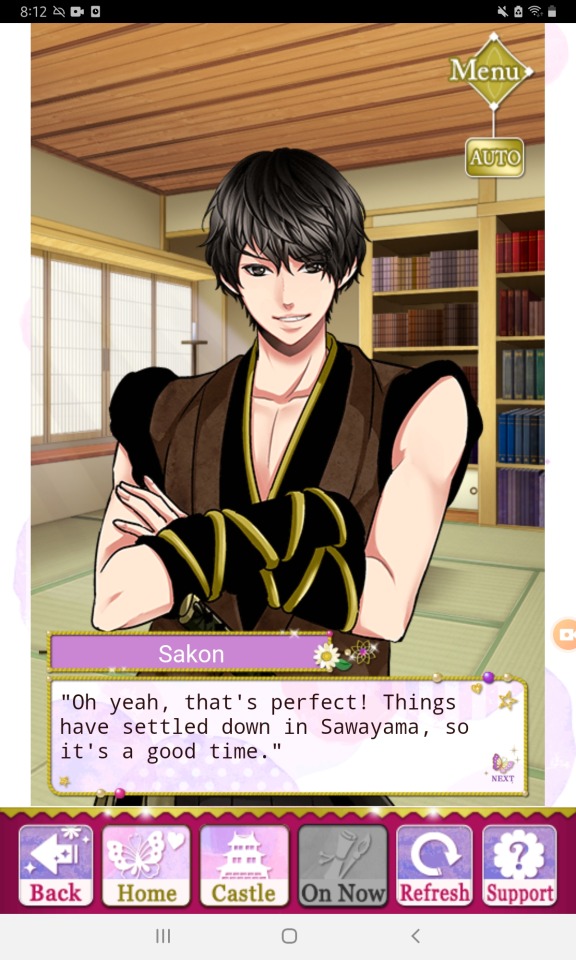
Sakon with hair down is my fav... Haha I forgot he fell for Saki AKA Mitsunari in the latter's MS
4 notes
·
View notes
Photo
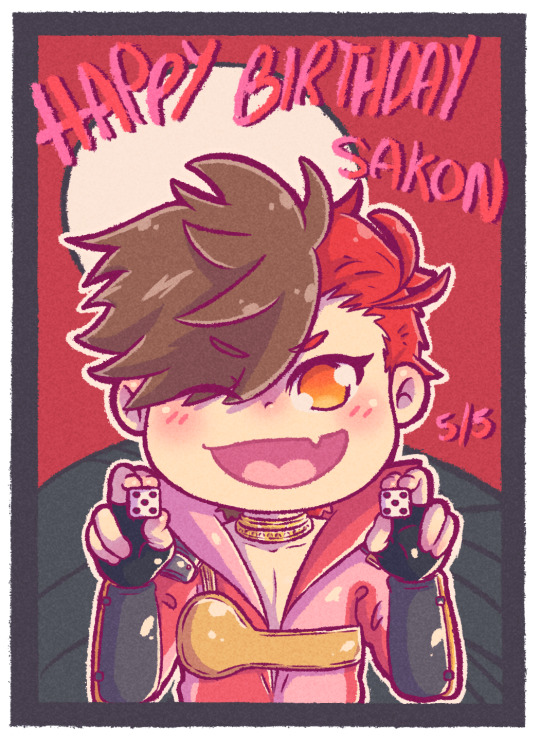
Late but Happy Birthday Sakon-chan ^^ (๑Wڡ`๑)
16 notes
·
View notes
Text
I'm not dead, just super inactive :'D
You guys already know about my sis visiting me with her Nintendo Switch and Pokemon Arceus. Well, I'm keeping pause from that game now since I started to play Nioh 1 after a year or so. I've been stuck on this one stage a year or so (Sakon Shima Boss Fight, BSSGUEHJSA!) so I haven't touch the game. I got so depressed since I just couldn't beat Sakon and I tried MANY times with many different ways, equipment etc. for nothing. That man kills you with 1-2 hits!
Well, recently I decided to watch a video (again) how to beat him and I found a video where the player said that Sakon is on level 240... and my William was only at level 130... Yeaaaaah... SURELY I can beat Sakon with that huge level difference! :'D
SO! I decided I will play Nioh and try to level William up at least once per day, hopefully 2 or 3 at times, so that I could have him leveled high enough (255) by the end of this year. In Nioh it's always the Bosses who are pain in the ass, not regular enemies. (I'm already sobbing because of next Boss fight since I know what's going to come, sob sob sob!)
Another thing is my mind had gone and created few new story ideas. One I'm working on (will publish it when it's done) and others are still waiting in my head. Short stories (hopefully) since they are quicker to work with and get out.
Something will come out of me as a new post / update etc. at some point. Just, please, be VERY patient with me! Thank you! <3
3 notes
·
View notes
Text
RECITING WITH YOU IN THE GLOWING RED WORLD

"Sakura Spectrum: Welcoming Delegates from Afar" - PART 1
━
Following the riverbank adorned with cherry blossoms, we arrive at the viewing spot, where everyone who had arrived earlier welcomes us with smiles.
NATSUME SOUSEKI : Sorry to keep you all waiting~ I wanted to show up earlier, but my manuscript wasn't finished.
OMOIKANE : It's okay. We had things to finish up on our end too.
ONO NO IMOKO : I heard you were busy setting up the venue. Thanks for your hard work.
SERIZAWA KAMO : Alright. Now that everyone's here.
As we settle into our seats, cups are distributed.
SERIZAWA KAMO : Despite all the challenges we faced, let's appreciate the opportunity to drink under the cherry blossom trees once again this year.
EVERYONE : Cheers!
-
The banquet features a variety of dishes, including sake personally recommended by Kamo-san and delicacies from all over the world.
NATSUME SOUSEKI : Wow! It's an impressive spread. Makes it tough to figure out where to start~
AYUMI : Indeed. It all looks delicious.
SERIZAWA KAMO : I had them brought in from my favorite restaurant. I can vouch for both the presentation and the taste.
SHIMA SAKON : In addition to Kamo-san's recommendation, Mitsukuni-san's taste test rated it four and a half stars!
TOKUGAWA MITSUKUNI : Almost a perfect five, and with the sake, it's definitely a five-star dish!

TAKASUGI SHINSAKU : Well, if YOU rate it so high then I'm eager to try it....Ah? It's true! This is amazing!
SERIZAWA KAMO : Told you so.
OMOIKANE : Shinsaku-kun, aren't you usually accustomed to more refined banquets in the Land of Elegance?
TAKASUGI SHINSAKU : Yeah. Banquets in the Land of Elegance are nice too. But, the cherry blossom viewing here is colorful and fun.
FUJIWARA NO MICHINAGA : Indeed. People from all walks of life, nobles and commoners alike, seem to be enjoying themselves. It creates a wonderful atmosphere.
NATSUME SOUSEKI : The free-spirited vibe is really nice~ While cherry blossoms are stunning wherever you encounter them, it's fascinating how the atmosphere varies across different regions.
ONO NO IMOKO : There are so many people gathered here today. Perhaps it's because the cherry blossom trees are all located in one place?
TAKASUGI SHINSAKU : Come to think of it, you're right. I never knew such a breathtaking place existed.
SERIZAWA KAMO : Yeah. It's what I like to call, a hidden gem.
TAKASUGI SHINSAKU : Why did we choose to hold it here, though? We usually have cherry blossom viewing in town, don't we?
At the question, Kamo-san raises his cup and takes a sip.
SERIZAWA KAMO : Actually, there were some unavoidable circumstances.
Kamo-san proceeds to explain the unique circumstances surrounding this year's cherry blossom viewing to the newly arrived guests...
#Akanesasu Sekai de Kimi to Utau#Akanesasu Sekai de Kimi to Utau Translations#茜さすセカイでキミと詠う#茜さすセカイでキミと詠うTranslations#Akaseka#Akaseka Translations#Reciting With You in the Glowing Red World#Reciting With You in the Glowing Red World Translations#Otome#Otome Translations#glowingred#sakuraspectrum
0 notes
